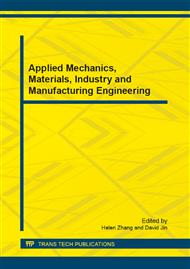p.154
p.158
p.162
p.166
p.170
p.174
p.178
p.182
p.186
Sintering Temperature Establishment of Quartz Sand Heat Insulating Porous Materials
Abstract:
The sintering temperature of the quartz sand heat insulating materials were researched thtough the differential analysis of the mixture in this paper. The conclusion show the density of the quartz sand heat insulating brick is increased with increasing sintering temperature, but the porosity of the quartz sand heat insulating materials is opposite discipline curve. The outside shape of the brick body is regular at 1100°C, however, the outside shape of the brick body is irregular at 1150°C, but the porosity of the quartz sand heat insulating materials at 1130°C is lower than that of the quartz sand heat insulating materials at 1100°C. The sintering temperature is higher, the more energy will be consumed. So the better sintering temperature of the quartz sand heat insulating materials is decided at 1100°C through analyzing the performance price ratio of the quartz sand heat insulating materials.
Info:
Periodical:
Pages:
170-173
Citation:
Online since:
April 2012
Authors:
Price:
Сopyright:
© 2012 Trans Tech Publications Ltd. All Rights Reserved
Share:
Citation:


